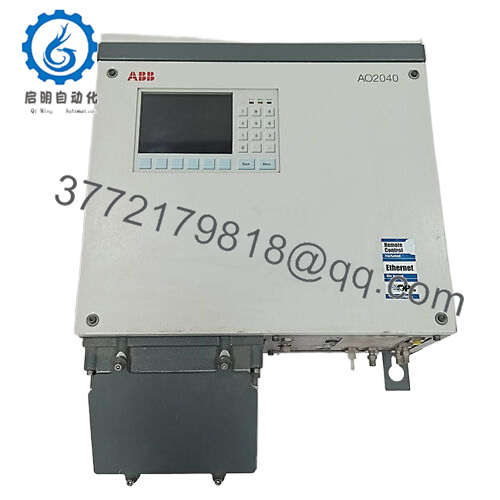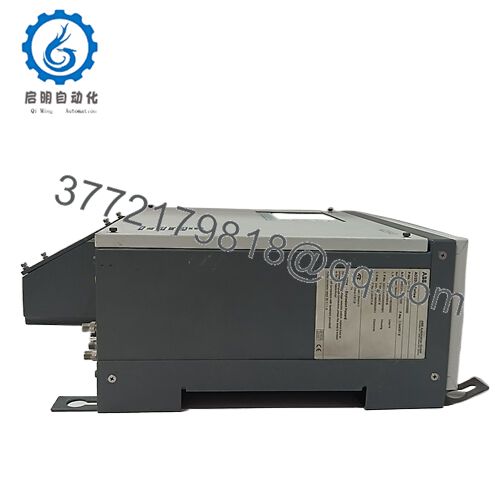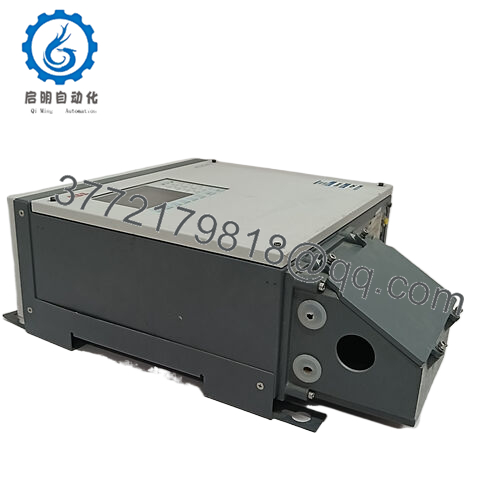Description
In the volatile arena of industrial automation, where real-time gas composition data underpins everything from emissions compliance to process optimization, engineers confront relentless challenges like sample stream contamination, drift in analyzer baselines, or integration silos that fracture oversight across a plant. Envision a cement kiln operation, where fluctuating flue gas profiles—laden with CO, NOx, and particulates—demand uninterrupted monitoring to fine-tune combustion and slash fuel waste; a momentary lapse in signal fidelity could inflate emissions penalties or force suboptimal runs that erode margins. Or picture a petrochemical cracker, navigating explosive atmospheres and corrosive vapors, where mismatched I/O interfaces between gas analyzers and DCS platforms spawn data gaps, risking yield inconsistencies or safety excursions in tightly looped process control setups. These pressures aren’t outliers; they’re the core tensions in high-reliability environments, where modular signal chains must deliver pristine, multi-parameter insights without the drag of frequent recalibrations or hardware silos.
The ABB AO2040 emerges as a cornerstone wall-mount housing in the Advance Optima AO2000 series, architected to encapsulate and orchestrate continuous gas analyzers with unyielding precision. It addresses the engineer’s imperative for resilient, scalable gas analysis by housing a central controller alongside up to four analyzer modules—spanning UV, IR, or paramagnetic tech—to process streams for up to six components simultaneously, feeding clean I/O signals into your broader automation fabric. In hazardous deployments like offshore platforms or steel mill ducts, the ABB AO2040 becomes vital, its IP54-rated enclosure shielding against dust ingress or purgeable zones while enabling Ethernet or PROFIBUS ties that sync with SCADA for remote tweaks. By streamlining calibration via air or internal cells, it eliminates test gas logistics, ensuring high reliability in I/O signal paths that adapt to variable flows without baseline wander.

- AO2040
The ABB AO2040 distinguishes itself in industrial automation through its understated modularity—it’s the chassis that doesn’t dictate but empowers, letting you mix LIMAS UV for photometrics with MAGNOS O2 for paramagnetic reads in one footprint, all while its system controller juggles alarms, ranges, and solenoid valves without taxing upstream CPUs. For retrofits in legacy emissions rigs, it bridges analog holdouts to digital overlays, curbing the engineering toll of protocol converters. In essence, it cultivates process control that’s not just vigilant but versatile, mitigating the drift that shadows compliance logs and fortifying the uptime your operations lean on.
The ABB AO2040 anchors the analyzer subsystem in your automation stack, serving as a self-contained wall-mount enclosure that integrates the AO2000’s central unit with modular analyzer heads, sample conditioning peripherals, and I/O boards for a unified gas processing node. It ingests raw sample flows—prepped via external pumps or filters—into analyzer modules like the Uras26 IR for hydrocarbon detection, where optics or electrochemical cells convert concentrations into 4-20mA analogs or Modbus packets, routed through the backplane to the controller for validation and output formatting. In a full deployment, it latches to facility Ethernet for HMI polling, with optional PROFIBUS for fieldbus daisy-chains, while digital relays handle interlocks like range switches or fault purges.
Its ecosystem interplay is intuitive: the controller firmware, configurable via ABB’s AOPanView software, auto-calibrates modules on schedule, embedding diagnostics for flow anomalies or lamp life via front-panel LCDs that mirror to remote dashboards. Redundancy options include dual-stream inlets for failover sampling, and its purgeable IP54 variant suits Zone 1/21 hazlocs, isolating electronics from volatiles. Positioned at the edge—field-adjacent but networked—the ABB AO2040 bridges raw process streams to mid-tier DCS layers, scaling from single-point vents to multi-stack arrays in 800xA frameworks. For hybrid sites blending AO2000 with third-party PLCs, its analog/digital mix minimizes gateways, so you hone gas models over chasing sync issues.
| Specification | Details |
|---|---|
| Model Number | AO2040 |
| Brand | ABB |
| Type | Wall-Mount Analyzer Housing |
| Input Voltage | 100-240 V AC |
| Operating Temp Range | 0°C to +45°C |
| Mounting Style | Wall |
| Dimensions | 600 x 400 x 200 mm |
| Weight | 15 kg (base, plus modules) |
| Interface/Bus | Ethernet, PROFIBUS DP |
| Compliance | CE, RoHS, ATEX Zone 1/21 |
| Supported Protocols | Modbus RTU/TCP, PROFIBUS |
| Typical Power Draw | 50 W (system) |
Integrating the ABB AO2040 lays a reliability foundation calibrated for the ebb and flow of gas streams, where its sealed housing and vibration-dampened mounts preserve optical alignments through thermal cycles or mechanical jostles, yielding performance consistency that locks baselines and curbs false drifts—crucial in emissions bays where a 1% variance can flag audits. In flare stacks humming with variable compositions, this means technicians who calibrate quarterly, not weekly, with air-zero routines that sidestep cylinder hazards, directly trimming logistics costs and sharpening the accuracy your regulators probe.
The modularity pays dividends in deployment ease, easing engineering overhead by hot-swapping analyzer heads without enclosure breaches—swap a Fidas24 FID for organics mid-campaign, and it’s profiling anew in an hour, while centralized I/O boards consolidate wiring for DCS handoffs. Engineered for the endurance of continuous duty, the ABB AO2040 weaves in predictive alerts for filter clogs or sensor wear via trend logs, extending MTTR by surfacing issues before they skew reads and reallocating crews to optimization runs. Broadly, it builds an automation envelope that grows with your monitoring mandates, where adding O2 cross-checks amplifies compliance without cabinet sprawl, securing long-term performance that meshes with capex restraint and operational fluidity.
In power generation, the ABB AO2040 houses Uras26 and Caldos25 modules for boiler flue scrutiny, tracking CO2 and SO2 in real time to optimize air-fuel ratios amid load swings—its fast response cycles ensure precise damper tweaks, upholding critical system uptime in process control arenas where emissions caps loom large. Wastewater facilities deploy it wall-mounted over aeration basins, integrating Limas11 UV for ammonia traces; here, IP54 purging counters humidity, delivering high reliability for effluent dosing that meets discharge norms without on-call scrambles.
Refineries complete the spectrum, encasing Fidas24 and Magnos206 in the ABB AO2040 for stack vent profiling, where explosion-proof configs handle Zone 1 volatiles—the enclosure’s Ethernet backbone feeds SCADA for remote range shifts, bolstering continuous uptime in harsh process control environments that demand unerring hydrocarbon tallies.
AO2020 – Rack-mount counterpart for 19-inch cabinet integrations in control rooms.
LS25 – External laser module add-on for remote, non-intrusive path-length analysis.
Uras26 – Infrared analyzer companion for multi-gas IR spectroscopy in core streams.
Limas11 – UV photometer variant for selective species like NH3 or Cl2 detection.
Fidas24 – FID-based hydrocarbons module for low-ppb total organic carbon reads.
Magnos206 – Paramagnetic O2 sensor for oxygen cross-validation in combustion mixes.
Caldos25 – Thermal conductivity unit for binary gas mixtures like H2 in N2.
When prepping the ABB AO2040 for wall affixation, confirm mounting surface integrity—vibration over 5g can loosen optics, so anchor to structural beams per ABB’s torque specs and run a level check for vertical alignment. Gauge purge compatibility if hazloc-bound; for Zone 1, integrate N2 feeds at 0.5 bar positive to maintain seals, and baseline ambient via enclosure probes to stay under 40°C internals—pair with a flow audit on sample lines to nix blockages pre-commission. Firmware prep seals it: load the unified AOP2000 build from ABB’s vault, sync to your network profile, and simulate a zero-gas cycle on a bench skid to vet module handshakes.
In the field, stewardship favors foresight over frenzy. Bimensual LCD scans for alarm tallies can unmask flow dips, prompting a filter swap before pressure faults cascade. Quarterly, unseal for optic wipes with lint-free cloths and isopropanol, re-torquing fittings to 2 Nm in gusty locales. Anchor yearly with software dumps: replay calibration drifts, retune if deviation tops 2%, and log for patterns like humidity ingress. These rhythms tap the system’s telemetry to perpetuate your industrial automation’s acuity, rendering care a cadence, not a crisis.



 WhatsApp: +86 16626708626
WhatsApp: +86 16626708626 Email:
Email:  Phone: +86 16626708626
Phone: +86 16626708626


